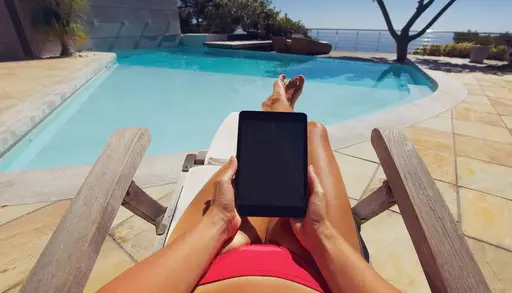
The Ultimate Guide to Energy Efficient Swimming Pool Pumps for Residential Swimming Pools: Save Energy and Cut Costs
Key Takeaways
Energy-efficient pool pumps offer adjustable speeds, improving filtration and reducing energy costs by up to 20% compared to traditional models.
Choosing the right size and type of pool pump (single-speed, dual-speed, variable-speed) is essential for optimal efficiency and cost savings.
Regular maintenance and smart features, such as programmable timers, enhance the performance of energy-efficient pool pumps, leading to significant long-term savings.
Understanding Energy Efficient Pool Pumps
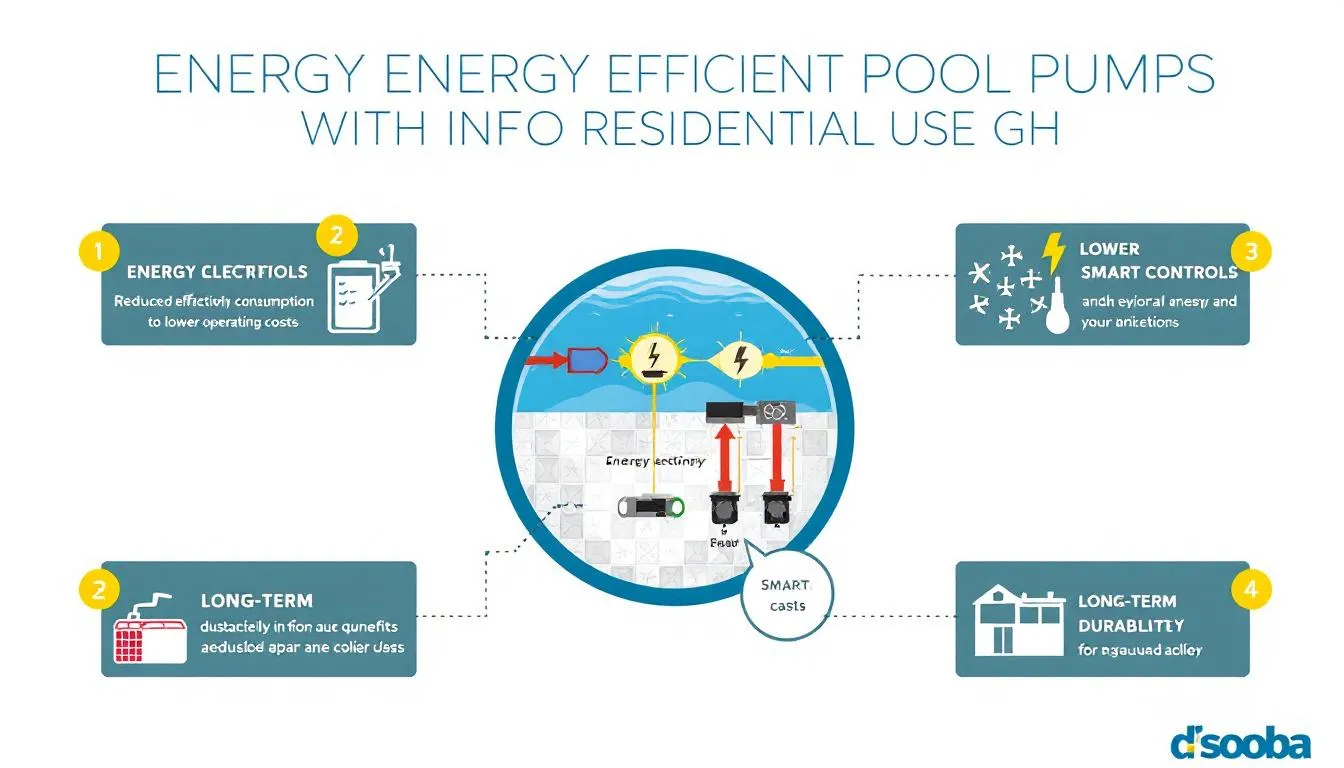
Energy-efficient pool pumps significantly reduce energy usage while maintaining clean and clear pool water. Unlike traditional single-speed pumps, which operate at a constant high speed, these pumps:
Adjust their speed to meet the pool’s specific needs
Conserve energy through this flexibility
Prolong the life of your pool equipment by minimizing wear and tear on motors and other components
These above ground pool pumps operate at lower speeds, which improves water quality by enhancing the filtration process. Benefits include:
Slower water movement allows for better filtration, removing more impurities and ensuring cleaner water for your swimming pool.
Energy-efficient pool pumps can save you up to $290 over their lifetime, often paying for themselves in less than two years.
Independent studies have shown that these ground pool pumps can reduce energy costs by as much as 20% compared to standard models. Additionally, a reliable pump for your pool can further enhance your pool filters efficiency.
Beyond the direct financial benefits, energy-efficient pool pumps also have a positive environmental impact. By using less energy, these pumps help lower your carbon footprint, contributing to efforts to mitigate climate change.
Additionally, many energy-efficient pumps have advanced motor designs that enhance performance and reduce noise, making your pool experience more enjoyable. The long-term benefits of switching to energy-efficient pool systems are significant, offering substantial cost savings on utility bills and a reduced environmental impact.
Types of Energy Efficient Pool Pumps
When it comes to energy-efficient pool pumps, there are three main types to consider: single-speed, dual-speed, and variable-speed pumps. Each type has its own advantages and drawbacks, so understanding their differences is crucial in making the best choice for your swimming pool.
Single Speed Pool Pumps
Single-speed pool pumps are the most basic and affordable option with the following characteristics:
Operate at a constant speed of 3,450 RPM, providing one speed setting for all tasks.
Have a lower upfront cost, making them appealing to many pool owners.
Constant high-speed operation leads to inefficiencies in filtration and higher energy consumption.
Known for high noise levels, which can be quite disruptive. A single speed pump can be a suitable choice for those seeking simplicity.
While single-speed pool pumps may seem cost-effective initially, their operational inefficiencies and higher energy usage can lead to increased energy bills over time. They run at full strength without variations, meaning they don’t adjust their speed for different tasks, which can result in wasted energy and higher operational costs.
Dual Speed Pool Pumps
Dual-speed pool pumps offer a middle ground between single-speed and variable-speed pumps. They come with two-speed settings: low and high. At lower speeds, dual-speed pumps are more energy-efficient and budget-friendly, providing significant energy-saving benefits compared to single-speed pumps. This flexibility allows pool owners to choose the appropriate speed for different tasks, such as filtering at a lower speed and vacuuming at a higher speed.
However, dual-speed pumps are not without their drawbacks. They lack the flexibility and precision of variable-speed pumps, as they only offer two fixed speed settings. This limitation can sometimes result in less optimal energy savings and performance in certain situations.
Variable Speed Pool Pumps
Variable-speed pool pumps are the most energy-efficient option available. These pumps can adjust their speed to match the specific needs of your pool, leading to significant energy savings. They feature advanced technology such as permanent magnet motors, built-in electronic controllers, and adjustable flow rates, which allow for maximum efficiency and quieter operation.
One of the standout features of variable-speed pumps is their ability to optimize performance through multiple speed and time settings, often with pre-programmed scheduling. This means you can set the speed pump to run at lower speeds during off-peak hours, saving energy and reducing costs.
Additionally, the electricity usage range for these pumps is between 20 to 600 watts per hour, allowing for tailored energy consumption based on how much energy the pool’s needs.
Choosing the Right Size Pool Pump
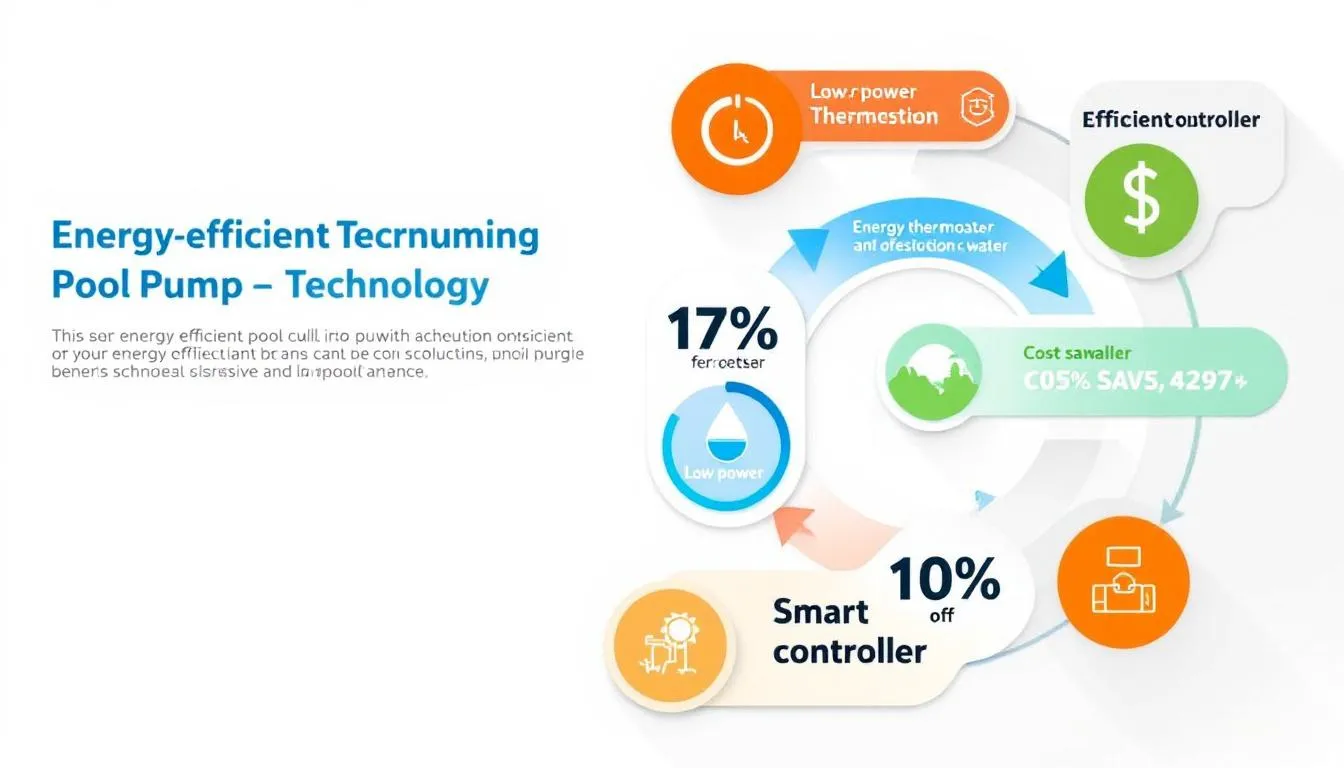
Choosing the right size pool pump is crucial for both efficiency and cost savings. A pump that is too small may not circulate water properly, leading to cloudy and unclean pool water. Conversely, a pump that is too powerful can waste energy and increase your energy bills. Therefore, it’s essential to find the right balance to ensure proper filtration without excessive energy consumption.
To calculate and consider the flow rate for a pool system:
Calculate the flow rate by dividing the pool volume by the number of hours required to turn over the water. This indicates the volume of water the pump can move per hour.
Ensure the recommended maximum pump flow rate is the same or less than the filter flow rate to avoid inefficiencies.
Consider the Total Dynamic Head (TDH), which measures the resistance to flow within the pool system.
Recognize that larger pools require more horsepower for proper circulation, which affects the TDH calculation.
Reducing the hydraulic resistance of the pool circulation system can also lower the energy use of the pump. This can be achieved by using larger pipes and minimizing bends, which reduces friction losses. By choosing the right size pump and optimizing your pool’s circulation system, you can significantly reduce energy consumption and costs.
Installation Tips for Energy Efficient Pool Pumps

Proper installation of your energy-efficient pool pump is essential to ensure its efficient and effective operation. Always follow the manufacturer’s instructions for setup to avoid any issues. A professional familiar with your pool’s needs and budget can help you select the right pump and ensure proper installation.
Regular maintenance checks are crucial to maximize the efficiency of energy-efficient pool pumps. Installing a timer can automate pump cycling, allowing for more frequent short runs that keep the pool cleaner without unnecessary energy use. Adjusting filtration times to around 6 hours daily can maintain water quality while minimizing energy costs.
Automated pool systems that manage pumps, heaters, and water chemistry can further streamline maintenance and improve efficiency.
Maintenance Best Practices for Energy Efficient Pool Pumps
Regular pool maintenance is key to ensuring the optimal performance and longevity of energy-efficient pool pumps. Common maintenance tasks include:
Cleaning the filter
Checking for leaks
Ensuring smooth operation
Clearing debris from intake grates regularly, as clogs can lead to increased energy consumption.
Timely backwashing of filters is crucial for maintaining efficiency. Excessive backwashing wastes water and energy, while insufficient backwashing can cause unnecessary energy consumption and energy inefficiency.
By following these maintenance best practices, you can ensure your energy-efficient pool pump operates at peak efficiency, saving you money and reducing energy consumption.
Top Brands for Energy Efficient Pool Pumps
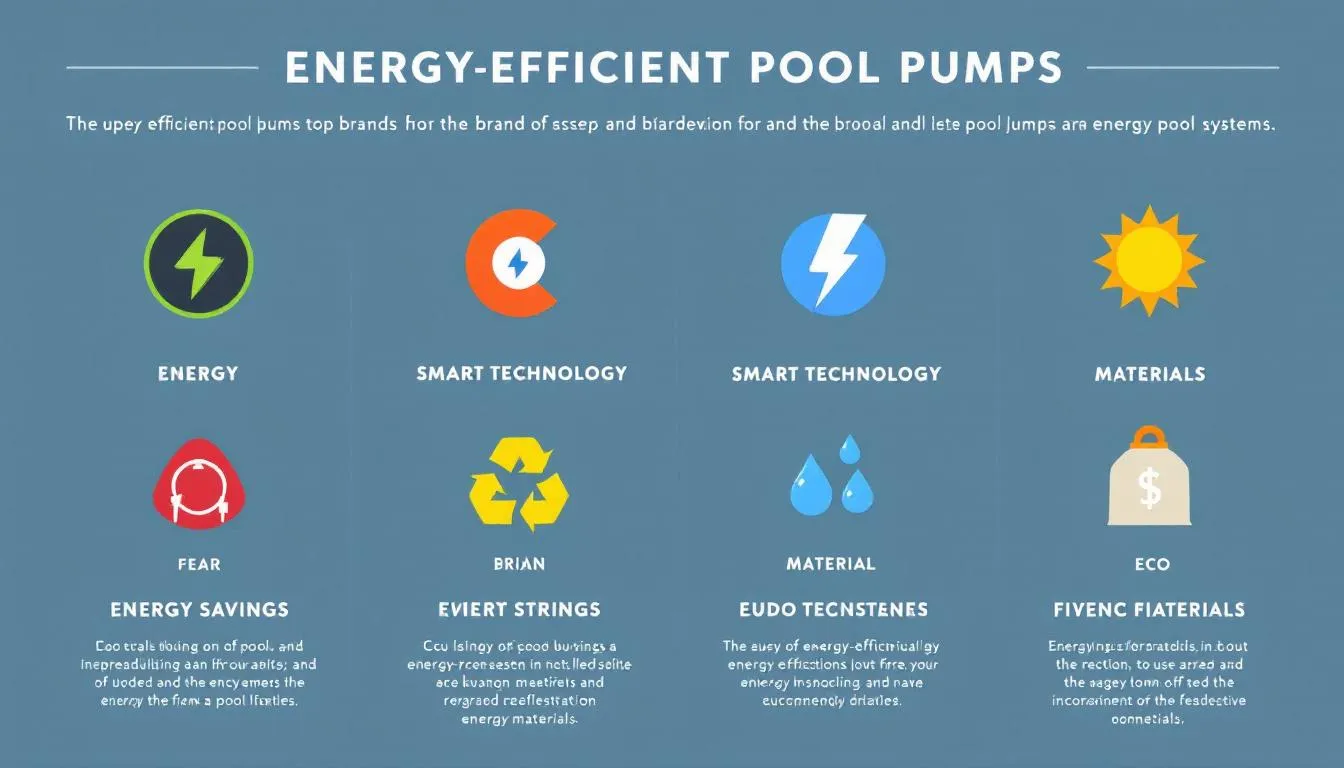
Choosing a pool pump from a reputable brand ensures reliable performance and excellent customer support. One of the top choices for energy-efficient pool pumps is Madimack. This brand offers:
Advanced features such as variable speed control
Innovative design
A 6-star energy rating, indicating high efficiency
A 4-year warranty, demonstrating durability and reliability
Consider your specific needs and personal preferences when choosing a pool pump. Madimack’s Elite VS Inverter eFLOW 400 pump, for example, features adaptive flow technology that adjusts water flow based on system needs, providing optimal energy savings and quiet operation.
Smart Features in Modern Pool Pumps
Modern pool pumps include smart features that boost energy efficiency and user convenience. Timers can reduce energy use by 75% by optimizing the filtration cycle. Variable speed control and programmable timers enable tailored energy consumption to meet the pool’s needs.
Smart pool technology also allows for remote adjustments and monitoring through mobile applications, providing added convenience for homeowners. Madimack’s Elite VS Inverter pump includes these innovative features, ensuring optimal energy savings and quiet operation.
With these smart features, managing your pool has never been easier or more efficient.
Benefits of Solar Pool Heaters
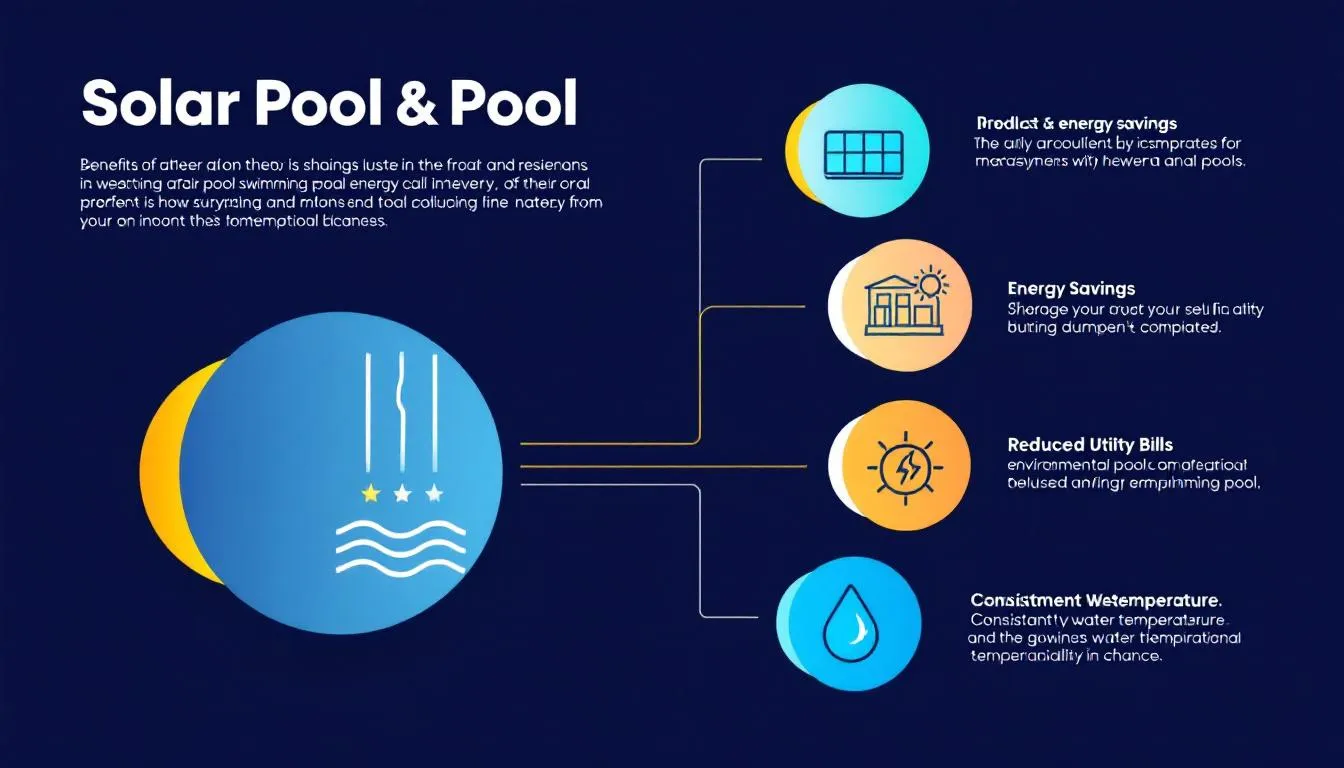
Solar pool heaters absorb sunlight through solar collectors to heat pool water, offering significant energy savings. Combining solar heaters with variable-speed pumps further enhances pool energy efficiency. Typically, solar pool heaters pay for themselves within 3 to 7 years due to the energy cost savings.
To optimize performance, solar pool heaters require a dedicated area facing south for optimal sunlight during installation. Solar covers can also capture and retain the sun’s heat, warm pool water, and reduce heat loss, leading to potential savings of 50% to 70% on pool heating costs.
LED Pool Lighting for Energy Savings
LED pool lights are an excellent way to achieve energy savings in your swimming pool. Their benefits include:
Using up to 85% less energy compared to traditional incandescent lights
Consuming only between 42 watts compared to 300 to 500 watts
Lasting up to 15 times longer than incandescent lights
Having a lifespan exceeding 20,000 hours
LED fixtures also provide a range of colors and can create various visual effects, enhancing the ambiance of the pool area. This not only makes your pool more enjoyable but also contributes to significant energy savings and reduced maintenance costs with led lights.
Pool Covers and Energy Efficiency
Pool covers effectively save energy by retaining heat and preventing water evaporation, reducing the energy required for heating. Various types, such as bubble covers, are available to retain heat and minimize water evaporation for a ground pool.
Automatic pool covers offer the highest convenience but come with a higher price tag, making them a premium option. Utilizing a pool cover can also decrease the need for ventilation in indoor pools, thereby further conserving energy.
By using pool covers, you can achieve significant energy savings and reduce your pool’s carbon footprint.
Summary
Switching to energy-efficient pool pumps and implementing complementary technologies like solar heaters and LED lighting can lead to significant energy savings and cost reductions. These improvements not only benefit your wallet but also contribute to a greener environment.
By understanding the different types of pool pumps, choosing the right size, and following proper installation and maintenance practices, you can maximize the efficiency and longevity of your pool equipment. Consider making the switch to energy-efficient solutions today and enjoy a cleaner, quieter, and more cost-effective swimming pool.
Frequently Asked Questions
What are the main types of energy-efficient pool pumps?
The main types of energy-efficient pool pumps are single-speed, dual-speed, and variable-speed pumps, with variable-speed pumps generally providing the highest efficiency and operational flexibility. Choosing the right type can significantly reduce energy consumption and lower operating costs.
How do variable-speed pool pumps save energy?
Variable-speed pool pumps save energy by adjusting their speed to align with the specific demands of the pool, resulting in reduced energy consumption and substantial cost savings.
Why is choosing the right size pool pump important?
Choosing the right size pool pump is crucial for effective water circulation and filtration, which helps maintain water quality while minimizing energy costs and maintenance. A properly sized pump operates efficiently, ensuring your pool remains clean and safe.
What are some smart features available in modern pool pumps?
Modern pool pumps now come equipped with smart features such as timers, variable speed control, programmable settings, and remote monitoring via mobile apps, enhancing efficiency and convenience for pool owners. These advancements allow for better energy management and ease of use.
How can solar pool heaters benefit pool owners?
Solar pool heaters offer pool owners substantial savings on energy costs by harnessing solar energy for heating, typically paying for themselves within 3 to 7 years. This investment not only enhances energy efficiency but also extends the swimming season.

